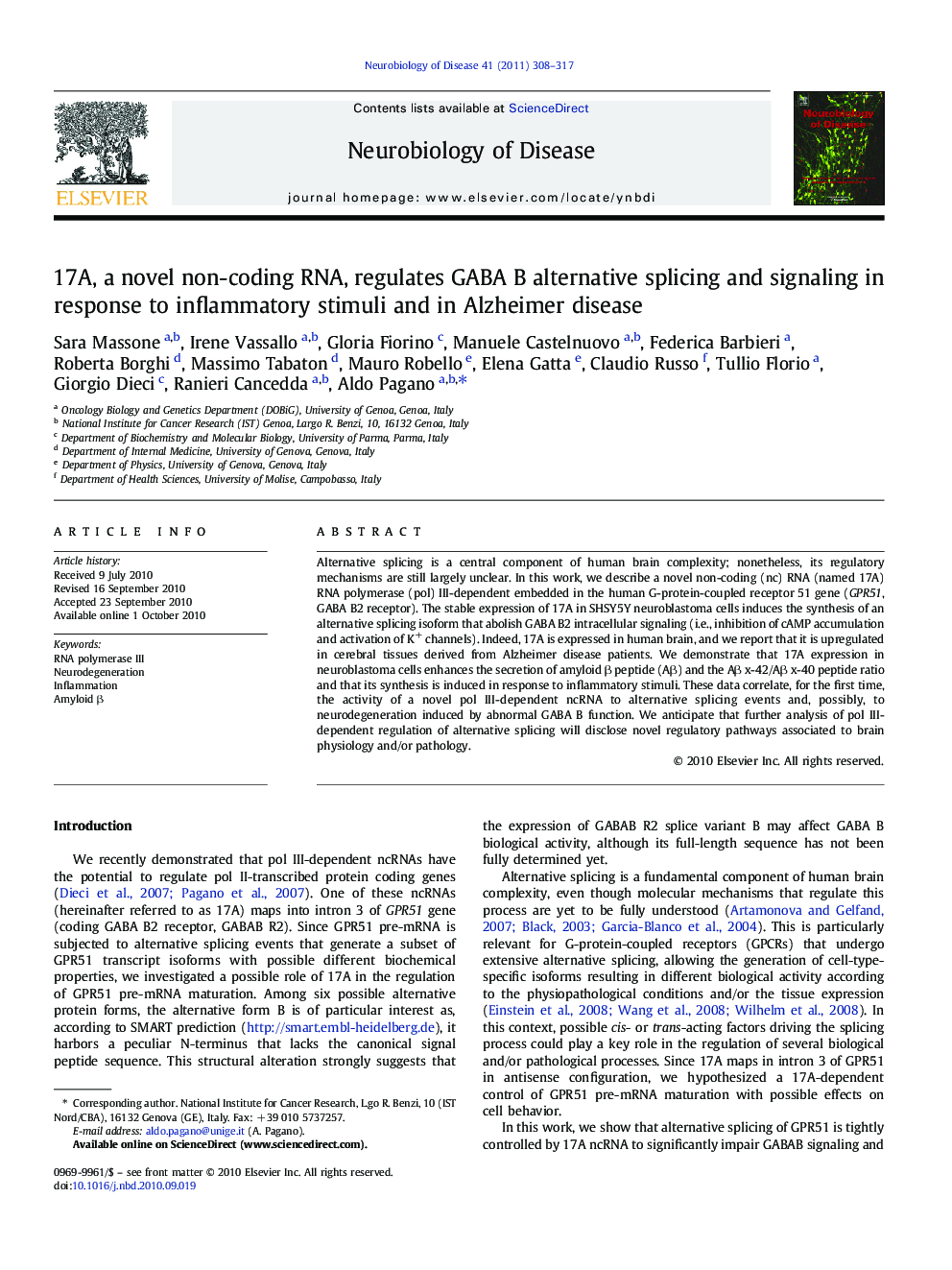| Article ID | Journal | Published Year | Pages | File Type |
|---|---|---|---|---|
| 3069594 | Neurobiology of Disease | 2011 | 10 Pages |
Alternative splicing is a central component of human brain complexity; nonetheless, its regulatory mechanisms are still largely unclear. In this work, we describe a novel non-coding (nc) RNA (named 17A) RNA polymerase (pol) III-dependent embedded in the human G-protein-coupled receptor 51 gene (GPR51, GABA B2 receptor). The stable expression of 17A in SHSY5Y neuroblastoma cells induces the synthesis of an alternative splicing isoform that abolish GABA B2 intracellular signaling (i.e., inhibition of cAMP accumulation and activation of K+ channels). Indeed, 17A is expressed in human brain, and we report that it is upregulated in cerebral tissues derived from Alzheimer disease patients. We demonstrate that 17A expression in neuroblastoma cells enhances the secretion of amyloid β peptide (Aβ) and the Aβ x-42/Αβ x-40 peptide ratio and that its synthesis is induced in response to inflammatory stimuli. These data correlate, for the first time, the activity of a novel pol III-dependent ncRNA to alternative splicing events and, possibly, to neurodegeneration induced by abnormal GABA B function. We anticipate that further analysis of pol III-dependent regulation of alternative splicing will disclose novel regulatory pathways associated to brain physiology and/or pathology.
Research Highlights►The novel 17A non-coding RNA drives alternative splicing of GABA B2 receptor. ►This event abolishes GABAB R2 intracellular signaling. ►17A transcription increases amyloid β peptide (Aβ) secretion and Aβ-x42/Aβ-x40 peptide ratio. ►17A synthesis can be induced by inflammatory stimuli. ►17A is expressed in human brain and is upregulated in cerebral tissues from Alzheimer disease cases.
